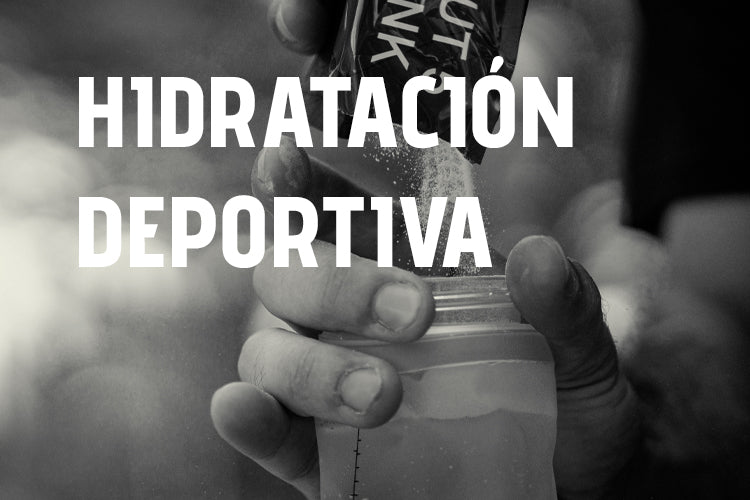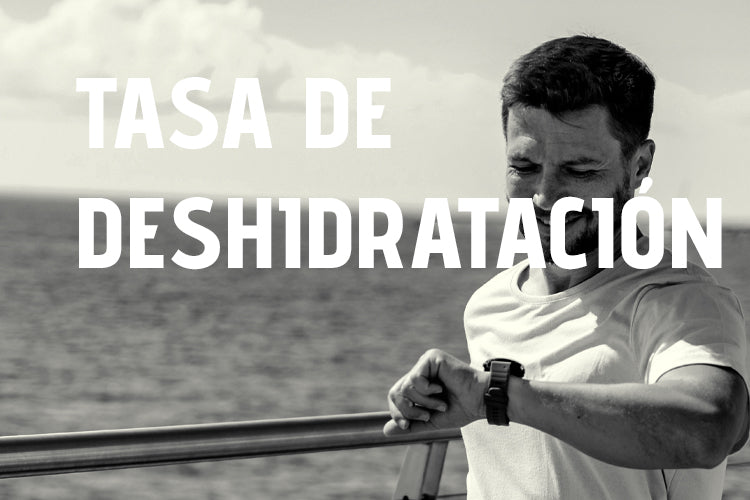In endurance sports (and most other sports), it's important to stay properly hydrated. Dehydration is very common and can affect performance. Overhydration, although less common, can be a much more serious problem. Knowing how to hydrate properly will help you achieve peak performance and avoid serious risks.
Why do we sweat?
To ensure our body temperature remains within acceptable limits and we don't overheat, we sweat. The higher the intensity of the exercise (whether at speed, pace, or power output), the more heat is produced and the more we need to sweat to stay cool. In hot conditions, this is even more important because sweating may be the only way we can cool our bodies. Other factors can affect sweating rates, such as the sun, high humidity, and insulating clothing. On the other hand, shade, wind, and low humidity can help cool us down and reduce sweating rates.
How much sweat loss is okay?
Sweat loss is usually measured as a percentage of body weight. In very short efforts, such as a 5K run, sweat rates may be high, but the time spent exercising (sweating) is short, so total body weight loss is likely low (less than 2% of body weight). As the duration increases and more time is spent sweating, losses can easily reach 2–5% of body weight.
Scientific evidence shows that performance can begin to degrade when sweat losses exceed 2-3%. However, it has been shown that in cold weather conditions, these 2-3% losses do not affect performance as much.
When we lose too much sweat, we become dehydrated; this reduces blood volume, increases heart rate, and makes it harder to maintain our body temperature. It also increases our perceived exertion. All of this reduces our ability to compete and can increase the risk of heat exhaustion and heat stroke. (1)

Why is overhydration a problem?
Drinking too much (overhydration) can lead to a dangerous medical condition called hyponatremia (low serum sodium levels). Early symptoms may include swelling, headaches, and vomiting. More serious symptoms include disorientation and seizures. In the worst cases, if left untreated, hyponatremia can lead to coma and death. The risks of hyponatremia increase significantly with overhydration.
How do I avoid dehydration and overhydration?
To prevent dehydration, it's important to start a race or training session hydrated and maintain adequate hydration throughout the race. Additionally, consuming the right amount of sodium per hour will prevent osmotic imbalance. Therefore, at FANTÉ, we've added 350mg of sodium to both the Gel 60 and the single-dose GLUT 5 DRINK , covering the minimum amount of sodium an athlete should consume per hour. If you'd like to learn more about which minerals we secrete through sweat and in what quantities, check out our guide .
Before the race, drink 500-700ml during the two hours before the start; excess water will be eliminated through urine. This can confirm that we are well hydrated by checking that our urine is pale .(2)

During the race (or training), there are two approaches to hydration.
Drinking when you're thirsty is a recommendation that works well for the slower athlete: if you're thirsty, drink; if you're not thirsty, don't drink.
Drinking according to a hydration plan can work for everyone, especially if you're going a little faster, if your race is longer, and if you understand your sweat rate. Your planned fluid intake should always aim for a rate that ensures you don't lose too much weight while training. A good indicator for this is consuming at or below your sweat rate. If you want to know how to measure your sweat rate, we recommend reading this guide.
Summary
It's advisable to use the early stages of a race when your gastrointestinal tract is working well to absorb both carbohydrates and fluids. Later in the race, even if you're thirsty, your gut may not absorb as much. Don't overdrink and use common sense. The goal should be to lose some weight (1-2 kg or ~2-3% of body weight) by the finish line.
It's important to keep in mind that if bloating occurs and fluids appear to be accumulating in the stomach, there's no point in drinking more fluids. Reducing the intensity of your run slightly and giving your stomach some time to transfer the fluid to the intestine for absorption will relieve the bloating.
Literature
1. Baker LB (2017). Sweating Rate and Sweat Sodium Concentration in Athletes: A Review of Methodology and Intra/Interindividual Variability. Sports Med. 47(Suppl 1):111-128,
2. Gonzalez et al. (2009). Expanded prediction equations of human sweat loss and water needs. J. Appl. Physiol. 107(2):379-88,




Leave a comment
This site is protected by hCaptcha and the hCaptcha Privacy Policy and Terms of Service apply.